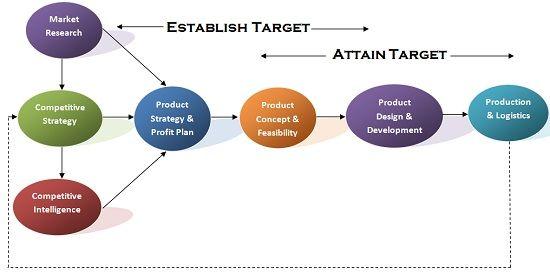In the complex world of logistics, finding the perfect balance between cost efficiency and quality is a constant challenge. Target costing is a powerful tool that allows companies to navigate this intricate landscape, ensuring that products reach their destination on time and within budget. In this article, we will delve into the realm of target costing in logistics, exploring how it impacts transport and shipping operations. Join us as we uncover the secrets to mastering this essential strategy in the ever-evolving world of supply chain management.
Understanding Target Costing in Logistics
Target costing in logistics involves setting a target cost for a product or service based on the price that customers are willing to pay. It is a strategic approach that helps companies determine the maximum cost they can incur to ensure profitability while remaining competitive in the market. By understanding target costing, companies can optimize their logistics operations to meet customer demands while controlling costs effectively.
Implementing target costing in logistics requires collaboration between various departments such as transportation, warehousing, and shipping. It involves analyzing the cost components of each stage of the logistics process to identify areas for cost reduction. By focusing on value-added activities and eliminating waste, companies can streamline their operations and achieve their target cost objectives. Utilizing performance metrics and continuous improvement initiatives are essential for successful target costing implementations in the logistics industry.

Optimizing Transport Costs through Target Costing
When it comes to optimizing transport costs, target costing is a powerful tool that can significantly impact the efficiency and profitability of your logistics operations. By setting a target cost for each shipment or transport route, you can better manage your expenses and ensure that you are getting the best possible value for your transportation budget.
Using target costing in your logistics strategy involves analyzing all aspects of your transport costs, from fuel and maintenance to labor and overhead. By identifying areas where costs can be reduced or eliminated, you can make informed decisions about how to allocate resources and streamline your shipping processes. With a focus on continuous improvement and cost control, target costing can help you achieve significant savings and improve the overall effectiveness of your transportation operations.

Benefits of Implementing Target Costing in Shipping
Implementing target costing in shipping can bring a multitude of benefits to logistics companies. One major advantage is the ability to set competitive prices that align with customer expectations while still maintaining profitability. By carefully analyzing costs and setting target costs for each shipping service, companies can ensure they are pricing their services effectively in the market.
Another benefit of implementing target costing in shipping is the ability to identify areas for cost reduction and efficiency improvements. By setting targets for costs at each stage of the shipping process, companies can pinpoint areas where costs are exceeding expectations and take action to streamline operations. This can lead to increased profitability and competitiveness in the shipping industry.

Strategies for Successful Target Costing Implementation in Logistics
When it comes to implementing successful target costing in logistics, there are several key strategies that can help streamline processes and increase efficiency. One important strategy is to conduct thorough market research to understand the competitive landscape and customer demand. By analyzing market trends, companies can set realistic target costs that align with customer expectations while still allowing for a reasonable profit margin. Additionally, collaborating closely with suppliers can lead to cost-saving opportunities through bulk purchasing or sourcing materials at lower prices.
Another crucial strategy is to continuously monitor and analyze costs throughout the production and shipping process. By regularly reviewing expenses and identifying areas for improvement, companies can make necessary adjustments to stay on track with their target costs. Utilizing technology, such as logistics software and tracking systems, can provide real-time data on cost drivers and help identify inefficiencies in the supply chain. Overall, a proactive approach to target costing implementation is key to achieving success in the logistics industry.
To Wrap It Up
In conclusion, Target Costing Logistics is a crucial aspect of the transport and shipping industry. By implementing efficient cost management strategies, businesses can optimize their operations, reduce expenses, and ultimately improve their overall profitability. By focusing on setting target costs at the early stages of product development, companies can streamline their processes, boost their competitiveness, and meet the ever-changing demands of the market. With the right mindset and approach, Target Costing Logistics can be a powerful tool for success in the fast-paced world of transport and shipping. So, next time you’re planning your logistics strategy, consider incorporating target costing principles to drive your business towards greater efficiency and success.